The digital divide is real. Here’s how it’s affecting under-resourced students, and what’s being done about it.
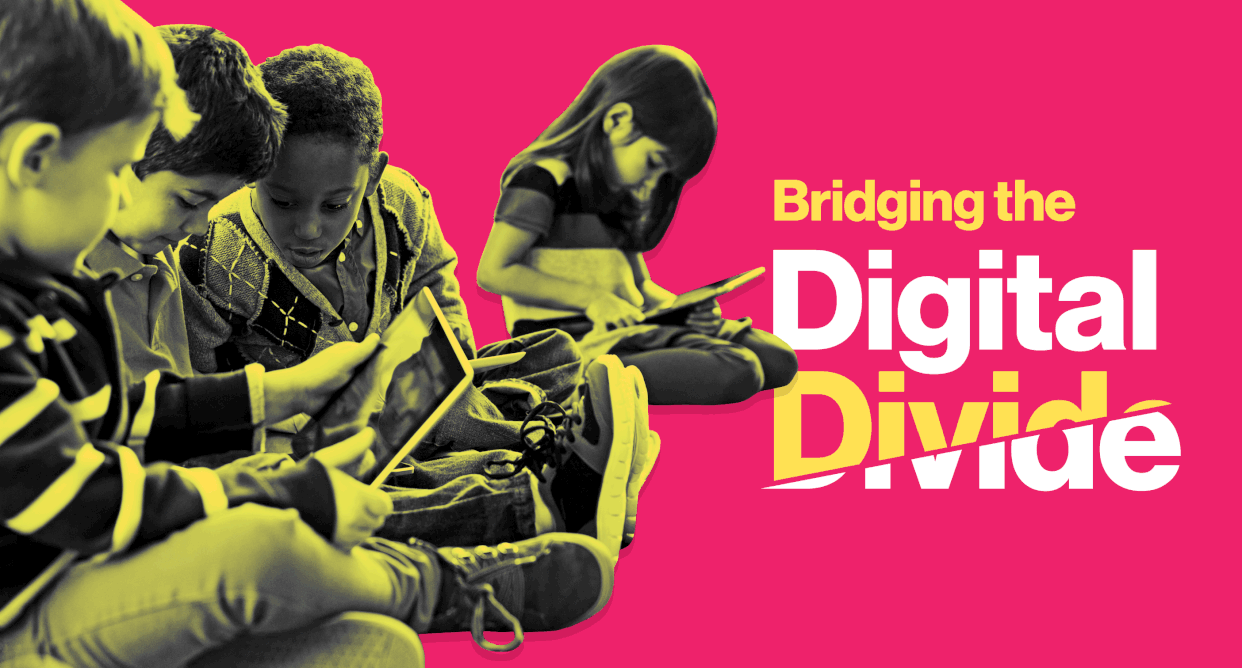
With the rapid spread of smart phones, wireless and broadband connections over the last two decades, it's easy to assume that everyone has access to the internet. But that assumption is why the small percent of people who don't are getting left behind. When those people are children, they're missing out on a key element of preparation for their futures. Schools, nonprofits and digital corporations like Verizon are stepping in to help.

The so-called digital gap has narrowed in the U.S. The latest stats from the Department of Education show that only 14.3 percent of children ages 3-18 don't have high-speed internet access at home, compared to 21 percent in 2010. Those numbers go up considerably, however, for African American (19.2 percent), Latino (17.3 percent), and Native American (36.7 percent) kids. Parents' income and education level, coupled with geographic location, are still a significant barrier to access.
"Under-resourced students aren't truly prepared for the real world once they get there, in terms of tech usage," William Pierce, Verizon Innovative Learning coach at Olmsted North Middle School in Louisville, Kentucky, told Yahoo Lifestyle.
Giving students a 1-to-1 connection
Many schools have access to computers or tablets that kids can use on campus. When Verizon Innovative Learning first began to provide technology to classrooms in 2012, it was using that same in-classroom model, with carts full of tablets to check out for an hour. Teachers weren't given specific training on the best ways to use the technology. And the students didn't have time to explore, research and discover in the same way one can do at home.
"We decided that we didn't just want to provide the professional development to teachers on how to use the technology effectively, but we also wanted to provide a one-to-one technology deployment," said Justina Nixon-Saintil, Verizon's Director of Corporate Social Responsibility.
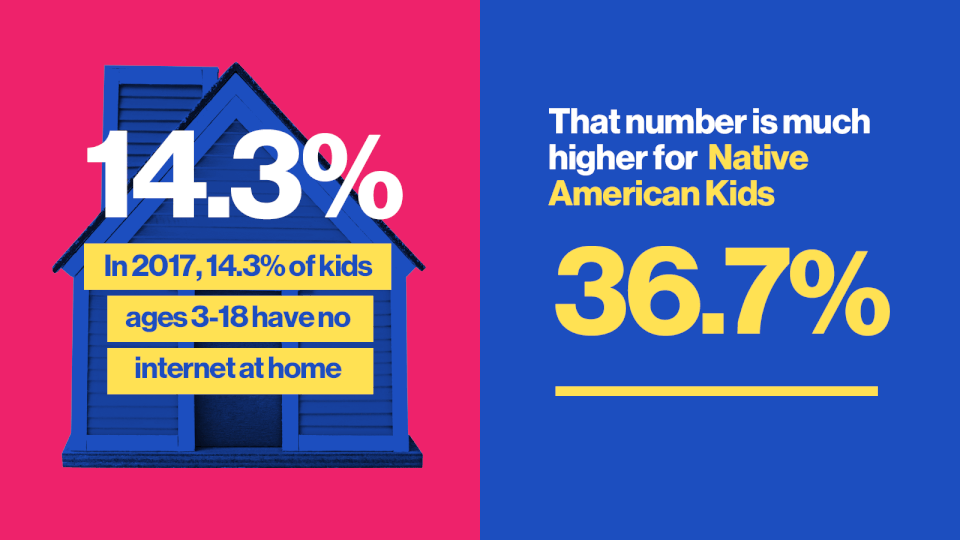
In 2014, eight middle schools in Pennsylvania, Illinois, North Carolina and California became the first Verizon Innovative Learning cohort. To qualify, the schools had to have at least 65 percent of their students eligible for free or reduced lunch. Today, there are 152 middle schools participating, with around 84 percent of the students eligible for lunch assistance, Nixon-Saintil said.
Here's what each school receives now:
A tablet for every student with access to 5GB of data monthly that they can use in or out of school
Funding for a dedicated Verizon Innovative Learning coach in the school
Continuous professional development for every teacher
Apps and STEM curriculum
Some schools have also received Innovation Learning Labs that include VR headsets, 3-D design and printing technology and robotics kits. Verizon began rolling out 5G access to many schools as well with the goal to bring 5G to 100 schools by 2021.
VIL in the classrooms
This isn't about tossing a bunch of tablets at kids and letting them watch and post videos all day. Before the students can get their tablets, they have to undergo weeks of digital citizenship training, which the school makes available to parents as well. Students and educators learn how to use technology to enhance their lessons in an active way, rather than with passive screen time. Many of the apps and sites we associate with irresponsible internet behavior are blocked by filters.
Once the tablets are in the classroom, the fun begins. Teachers can have their students collaborate on documents together. They can give students access to 3-D renderings of science models or augmented-reality depictions of far-off locations. They have kids shoot and edit videos together. They do research for projects. And yes, they play educational games. It's a big change from the endless worksheets and textbooks that do no favors for a distractible middle schooler’s brain.
"Now they're getting: in first period, I might be doing a visual worksheet, but I'm collaborating with the student next to me, and we're researching through websites," Pierce said. "Second period, I'm creating a digital poster. Third period, I'm using it to program this robot. Fourth period, I'm creating a video. Fifth period, I'm doing a scavenger hunt."
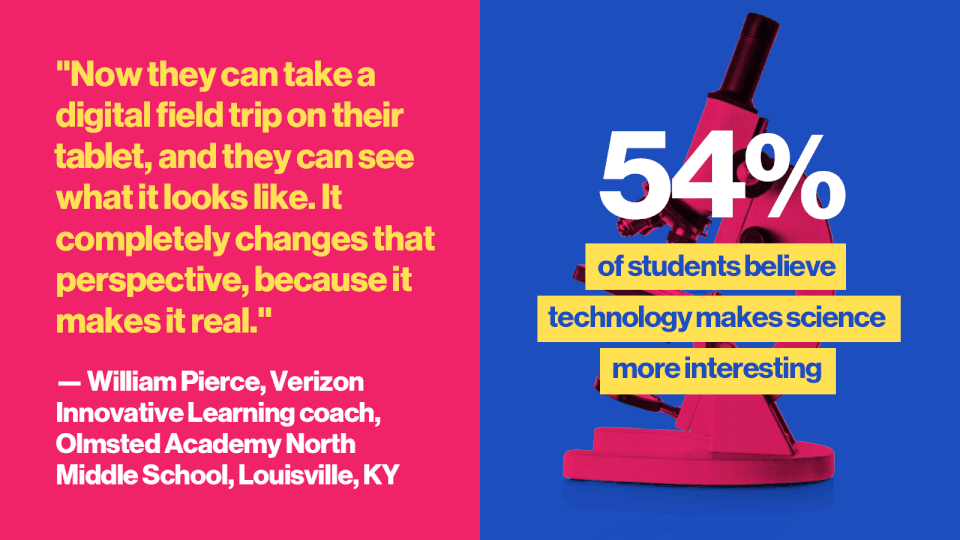
Olmsted North sixth grade science teacher Alyssa Riedy has been excited to see how technology helps her make physics and astronomy more tangible for students.
"We use a lot of online simulations," she told Yahoo. "By having that access one to one, not just me projecting it on the screen, they get to see it, they get to manipulate it and move it around on the screen."
Riedy also believes they're gaining a deeper understanding of the material when they create content around it. "They're not just sitting there and receiving content, they're actually starting to create things based on what they're learning," she said. "And the more they create, the more they're doing with whatever content they're learning, the more connections they're making."
In the classroom, Riedy is also able to administer quizzes and get real-time feedback about each student's grasp of the lessons. That makes it easier for her to adjust her approach as she goes.
Maintaining the connection at home
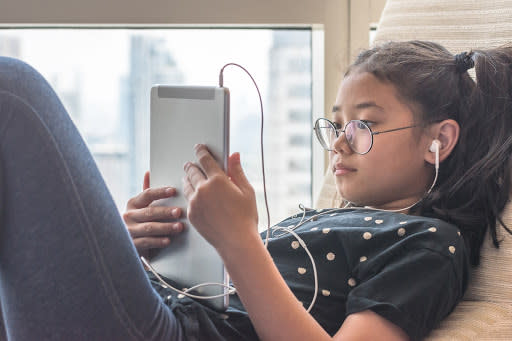
When the bell rings, the students continue their Verizon Innovative Learning experience. They're not just doing Wikipedia searches on their tablets at home. One Olmsted North math teacher has her students find examples of their math concepts out in the real world. Some teachers have the students record how they solve problems. There are apps that make collaboration possible for students working on projects.
Because Olmsted North students' families come from dozens of different countries, Pierce said teachers and administrators have used the tablet’s translating capabilities to communicate with parents.
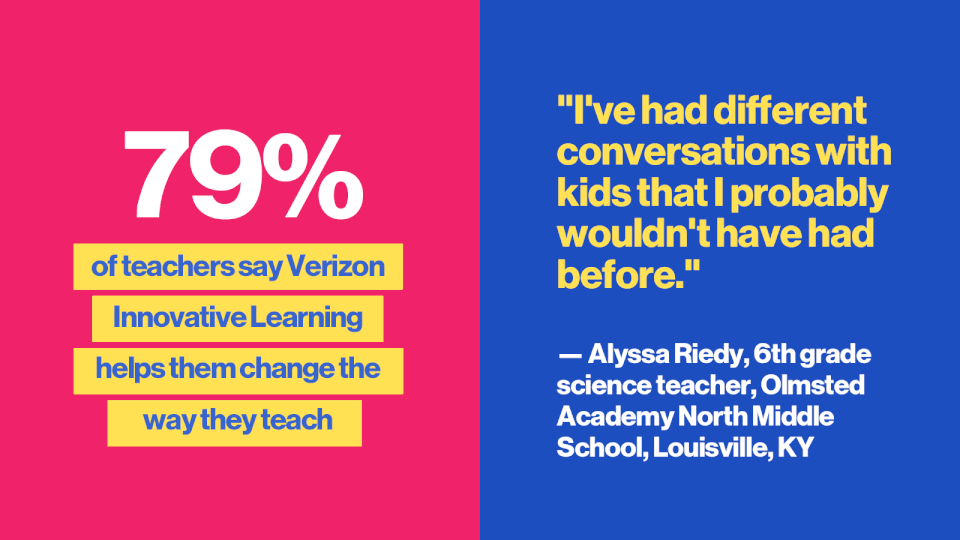
Riedy is most impressed with how being connected has encouraged her students interact with her in and out of class.
"I've had different conversations with kids that I probably wouldn't have had before," she said.
Last year, a student decided to take up NBA player Kyrie Irving's argument that the Earth is flat in an online debate with her.
"We went back and forth through email probably seven or eight times, with him sending me different things he had found online that he believed supported his claim. I back and questioned him, 'Why is this like this, then?' Then I sent another little video or article for him to read. He'd come back with something different. Even though it was started as a joke, it was this student actually taking the time to find evidence to support what he said he believed and advocating it to someone."
What successful digital inclusion looks like
Fun videos and amusing student-teacher debates aren't all the program has to show for itself. Schools that have been using Verizon Innovative Learning for years have seen bigger results too. New York City's P.S. 171 Patrick Henry Preparatory School, which joined in 2016, has seen gains in its math and English language arts (ELA) test scores for its sixth, seventh and eighth graders. They went from 64 percent proficiency in ELA in 2016 to 74 percent in 2018 (with a slight dip down to 70 percent in 2019). In math, the percent of students who were proficient went from 65 percent to 69 percent in 2019. The numbers for seventh-grade math alone were even more dramatic, rising from 60 percent proficiency in 2016 to 80 percent in 2019. The school has become one of the top-performing performing middle schools in the entire state, with graduates going on to be accepted at the most elite high schools in the city.
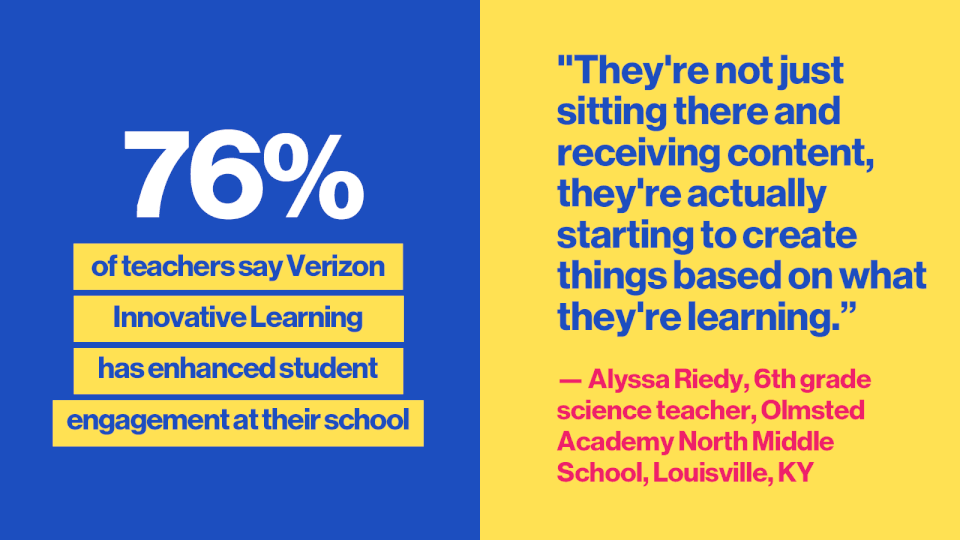
Beyond all those nice test scores, Verizon's goal is really to level the playing field for everyone in terms of technological access. The plan is to expand Verizon Innovative Learning to 350 schools by 2021.
"We believe that we have a responsibility as a company to make a difference in our communities, to have a positive impact, and Verizon Innovative Learning is one way that we can do that, by addressing the barriers to digital inclusion."
This article was paid for by Verizon Innovative Learning and written by Yahoo Lifestyle’s branded content team.
